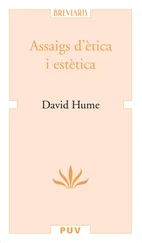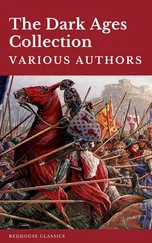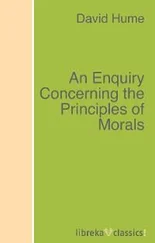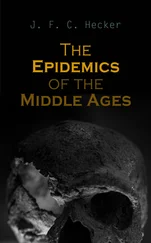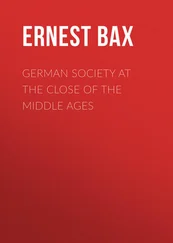Ravenna has no natural amenities. Here are the impressions the place produced on a visitor from Gaul not many years after Placidia’s death. 85“The Po divides the city, part flowing through, part round the place. It is diverted from its main bed by the State dykes, and is thence led in diminished volume through derivative channels, the two halves so disposed that one encompasses and moats the walls, the other penetrates and brings them trade — an admirable arrangement for commerce in general, and that of provisions in particular. But the drawback is that, with water all about us, we could not quench our thirst; there was neither pure-flowing aqueduct, nor filterable cistern, nor trickling source, nor unclouded well. On the one side the salt tides assail the gates; on the other, the movement of vessels stirs the filthy sediment in the canals, or the sluggish flow is fouled by the bargemen’s poles, piercing the bottom slime.” “In that marsh the laws of everything are always the wrong way about; the waters stand and the walls fall, the towers float and the ships stick fast, the sick man walks and the doctor lies abed, the baths are chill and the houses blaze, the dead swim and the quick are dry, the powers are asleep and the thieves wide awake, the clergy live by usury and the Syrian chants the psalms, business-men turn soldiers and soldiers business-men, old fellows play ball and young fellows hazard, eunuchs take to arms and rough allies to letters.”
In this description the writer remarks the presence of the Syrian, a familiar figure to him in the cities of southern Gaul. But it was not only oriental traders whom the new Imperial residence attracted. It is probable that artistic craftsmen from Syria and Anatolia came to embellish the city of Honorius and Placidia, and to teach their craft to native artists. For it is difficult otherwise to explain the oriental inspiration which so conspicuously distinguishes the Ravennate school of art that it has been described as “half-Syrian.” 86
It was indeed in the artistic works with which its successive rulers enriched it that the great attraction of Ravenna lay and still lies. Many of these monuments have perished, but many have been preserved, and they show vividly the development of Christian art in Italy in the fifth and sixth centuries, under the auspices of Placidia, Theoderic, and Justinian, under the influence of the East. Brick was generally the material of these buildings, but their unimpressive exterior appearance was compensated by the rich decoration inside and the brilliant mosaics which shone on the walls. Ravenna is the city of mosaics. At Rome we have from the fourth and early fifth centuries fine examples of this form of pictorial art in the churches of S. Costanza and S. Pudenziana and S. Maria Maggiore, 87but at Ravenna, in the days of Placidia, the art of painting with coloured cubes seems to enter upon a new phase and achieve more brilliant effects. 88
No trace remains of the Imperial palace of the Laurelwood, but the churches of St. John the Evangelist and St. Agatha, the Oratory of St. Peter Chrysologus, 89the Baptistery, and the little chapel dedicated to SS. Nazarius and Celsus which was built to receive the sarcophagi of the Imperial family, are all monuments of the epoch of Placidia. 90The basilica of St. John was the accomplishment of a vow which the Empress had made to the saint when she and her two children were in peril of shipwreck on the Hadriatic. 91The story of their experiences was depicted on the pavement and the walls, but all the original decorations of the church have perished. 92The Baptistery may have been begun in the lifetime of Placidia, but appears not to have been completed till after her death by the archbishop Neon. It is an octagonal building, with two tiers of round arches springing from columns, inside, crowned by a hemispherical dome, of which it has been observed that “the ancient world affords no instance of so wide a vault constructed of tapering tubes.” 93The mosaics of the Baptistery and of Placidia’s mausoleum have been wonderfully well preserved. The mausoleum, constructed about A.D. 440, is in the form of a small Latin cross, of which the centre is surmounted by a square tower closed by a conical dome. 94Here the artist in mosaics has achieved a signal triumph in the harmonious effects of his colours. The cupola is a heaven of exquisite blue, dotted with golden stars and arabesques, and in the midst a great cross of gold. Above the door and facing it are two pictures, one perhaps of St. Laurence, the other of the Good Shepherd, but not the simple Shepherd of the Catacombs, bearing a sheep on his shoulder. 95Here he is seated on a rock in a meadow where six sheep are feeding, his tunic is golden, his cloak purple, his head, which suggests that of a Greek god, is surrounded by a golden halo.
Into this charming chapel Placidia removed the remains of her brother Honorius and her husband Constantius, and it was her own resting-place. The marble sarcophagus of Honorius is on the right, that of Constantius, in which the body of Valentinian III was afterwards laid, on the left. Her own sarcophagus of alabaster stands behind the altar, and her embalmed body in Imperial robes seated on a chair of cypress wood could be seen through a hole in the back till A.D. 1577, when all the contents of the tomb were accidentally burned through the carelessness of children. 96
The coins of the Empress show a conventional face, like those of her daughter and of the other Imperial ladies of the age. They do not portray her actual features, nor can we form any very distinct impression of her appearance from a gold medallion of which two specimens are preserved. 97
CHAPTER IX: THE EMPIRE OF ATTILA
§ 1. The Geography of the Balkan Peninsula
THE misfortunes of the Balkan Peninsula have been almost uninterrupted from the fourth century to the present day. In the fifth and sixth centuries their plight was almost unendurable. They suffered not only from the terrible raids of nomad savages who had come from beyond the Volga, but also from the rapacious cruelty of the Germans. From the reign of Valens to that of Heraclius the unhappy inhabitants might any morning wake up to find a body of barbarians at their gates. As we shall be concerned in these volumes with the successive invasions of Huns, Ostrogoths, Slavs, and Bulgars, it will be well for the reader to have a general idea of the conformation and geography of the peninsula. 1

We may consider Mount Vitoš, and the town of Sardica, now Sofia, which lies at its base as the central point. Rising in the shape of an immense cone to a height of 7500 feet, Vitoš affords to the climber who ascends it a splendid view of the various intricate mountain chains which diversify the surrounding lands — a view which has been pronounced finer than that at Tempe or that at Vodena. In the group of which this mountain and another named Ryl, to southward, are the highest peaks, two rivers of the lower Danube system, the Oescus (Isker) and the Nišava have their sources, as well as the two chief rivers of the Aegean system, the Hebrus (Maritsa) and the Strymon (Struma).
From this central region stretches in a south-easterly direction the double chain of Rhodope, cleft in twain by the valley of the Nestos (Mesta). The easterly range, Rhodope proper, forms the western boundary of the great plain of Thrace, while the range of Orbelos separates the Nestos valley from the Strymon valley.
Читать дальше






